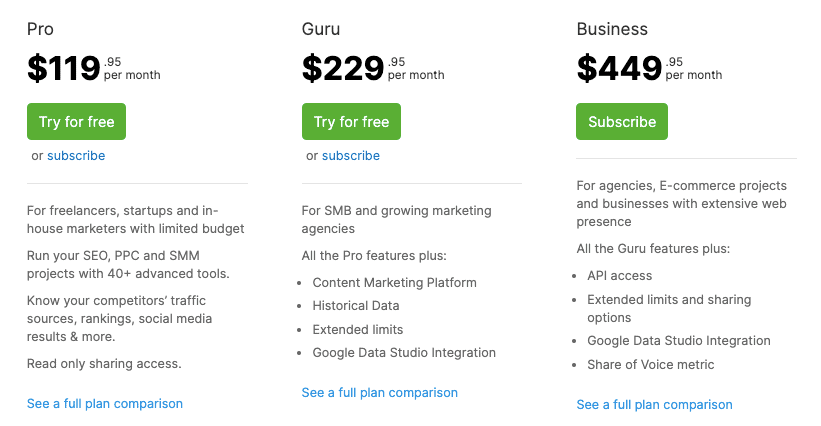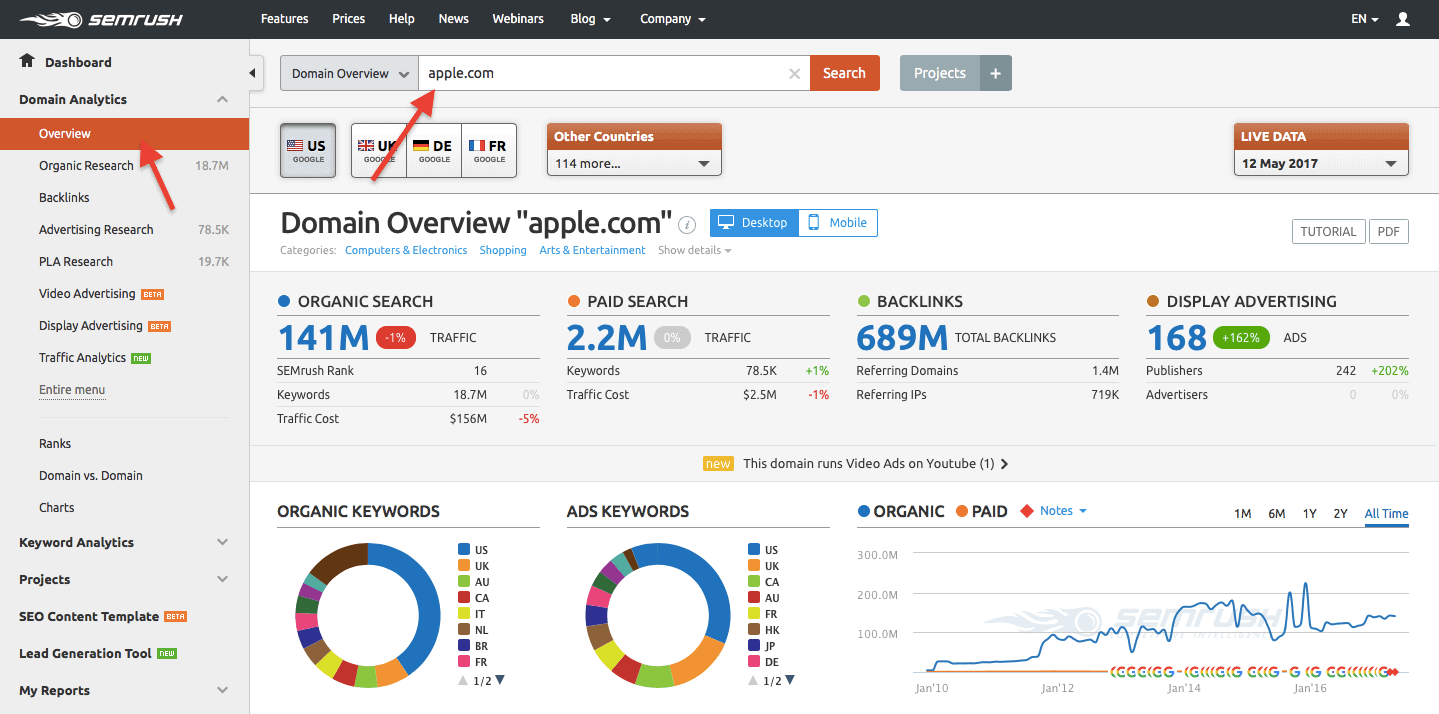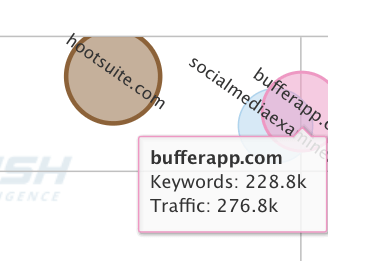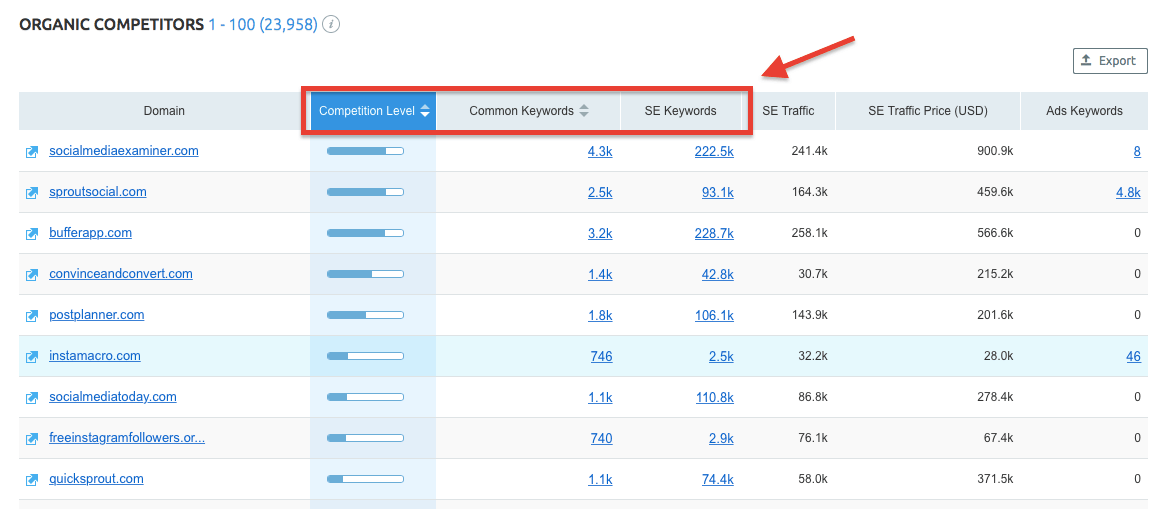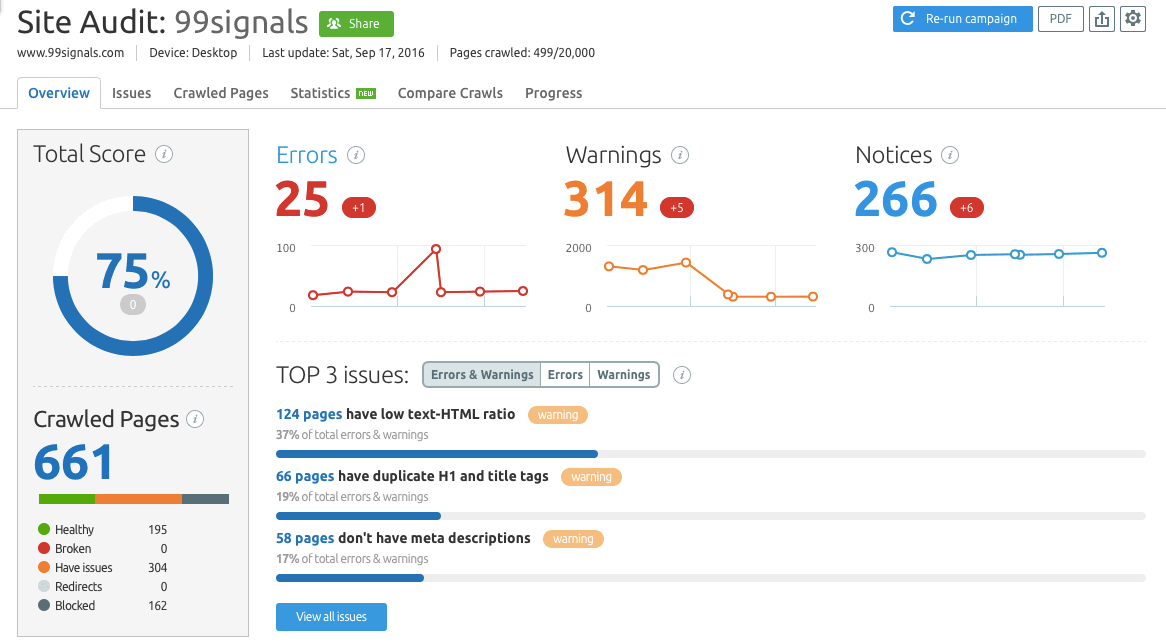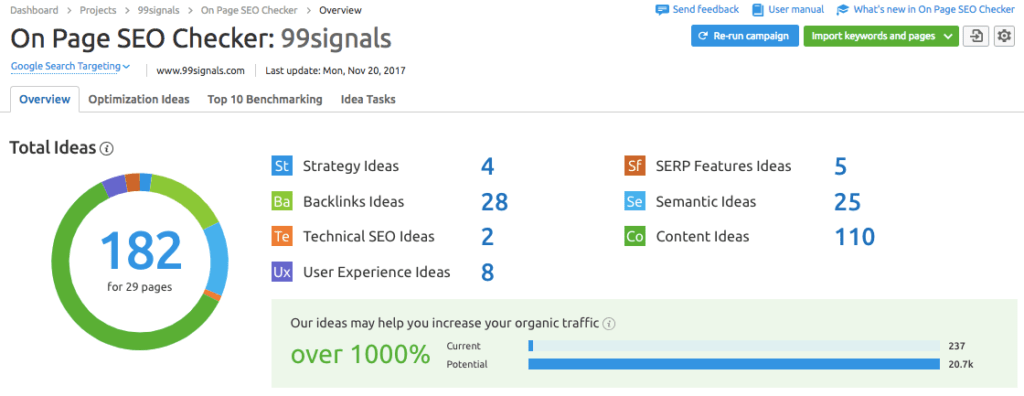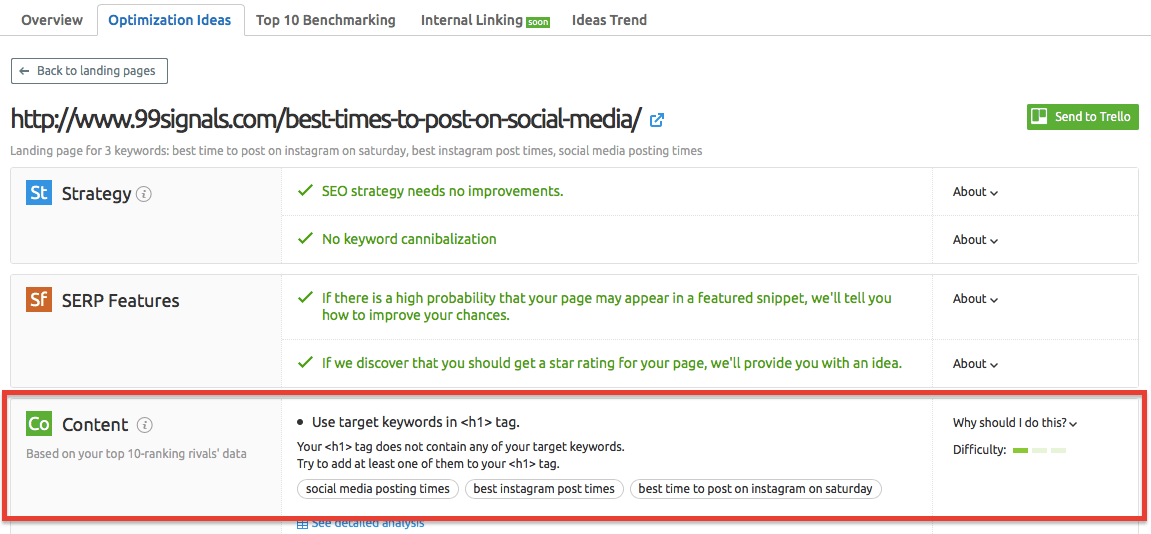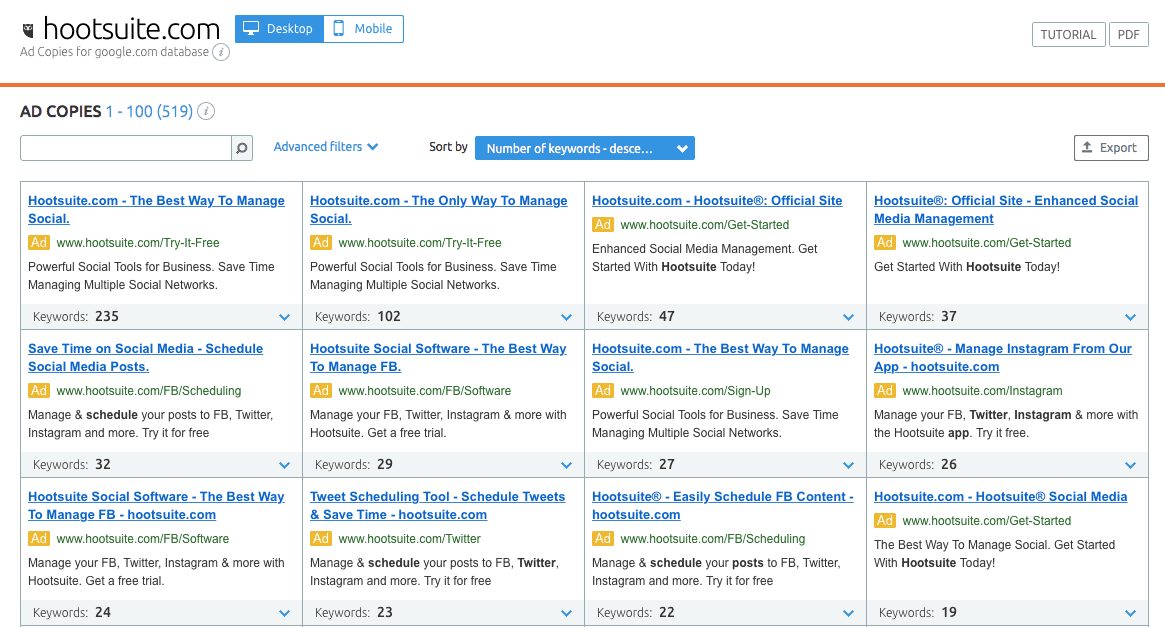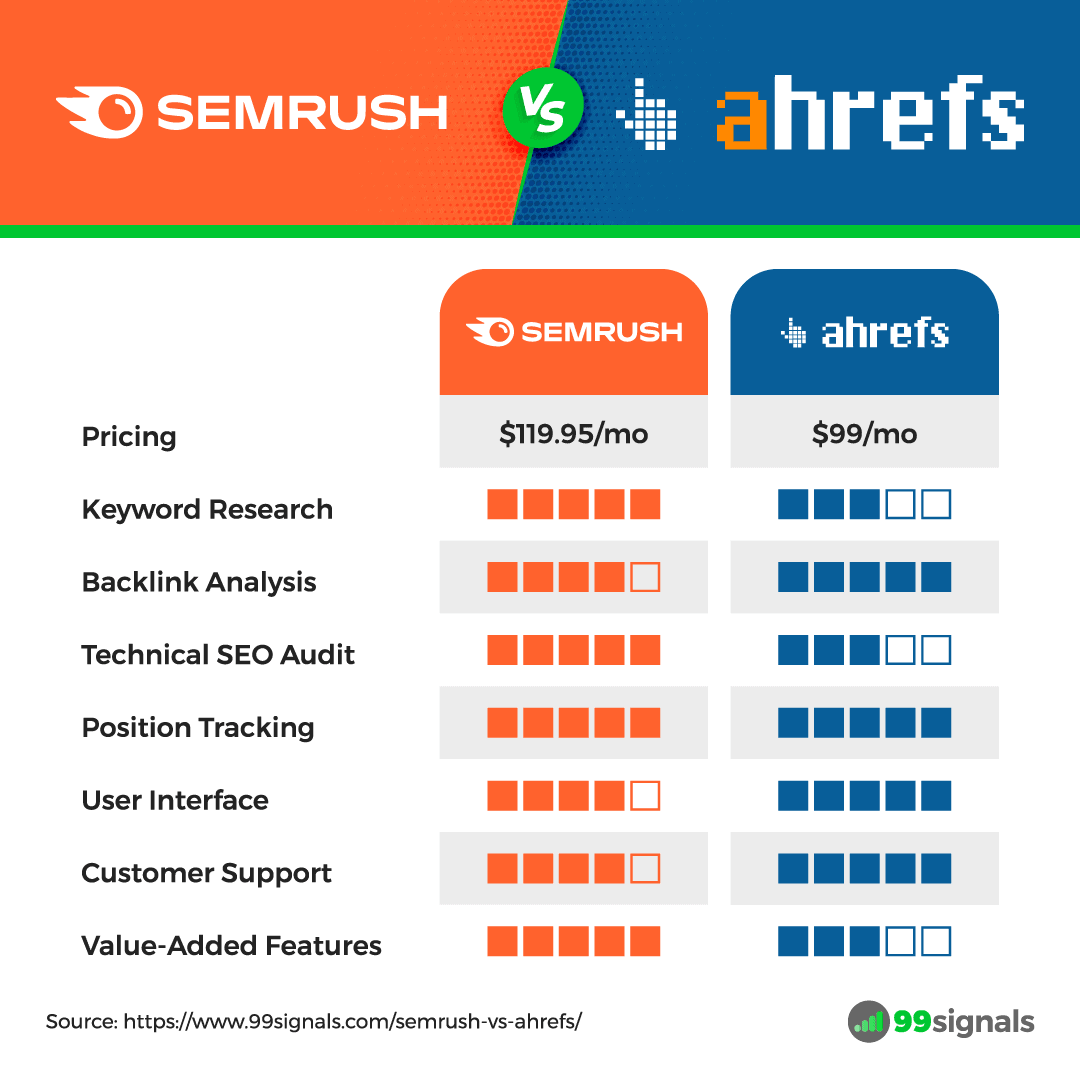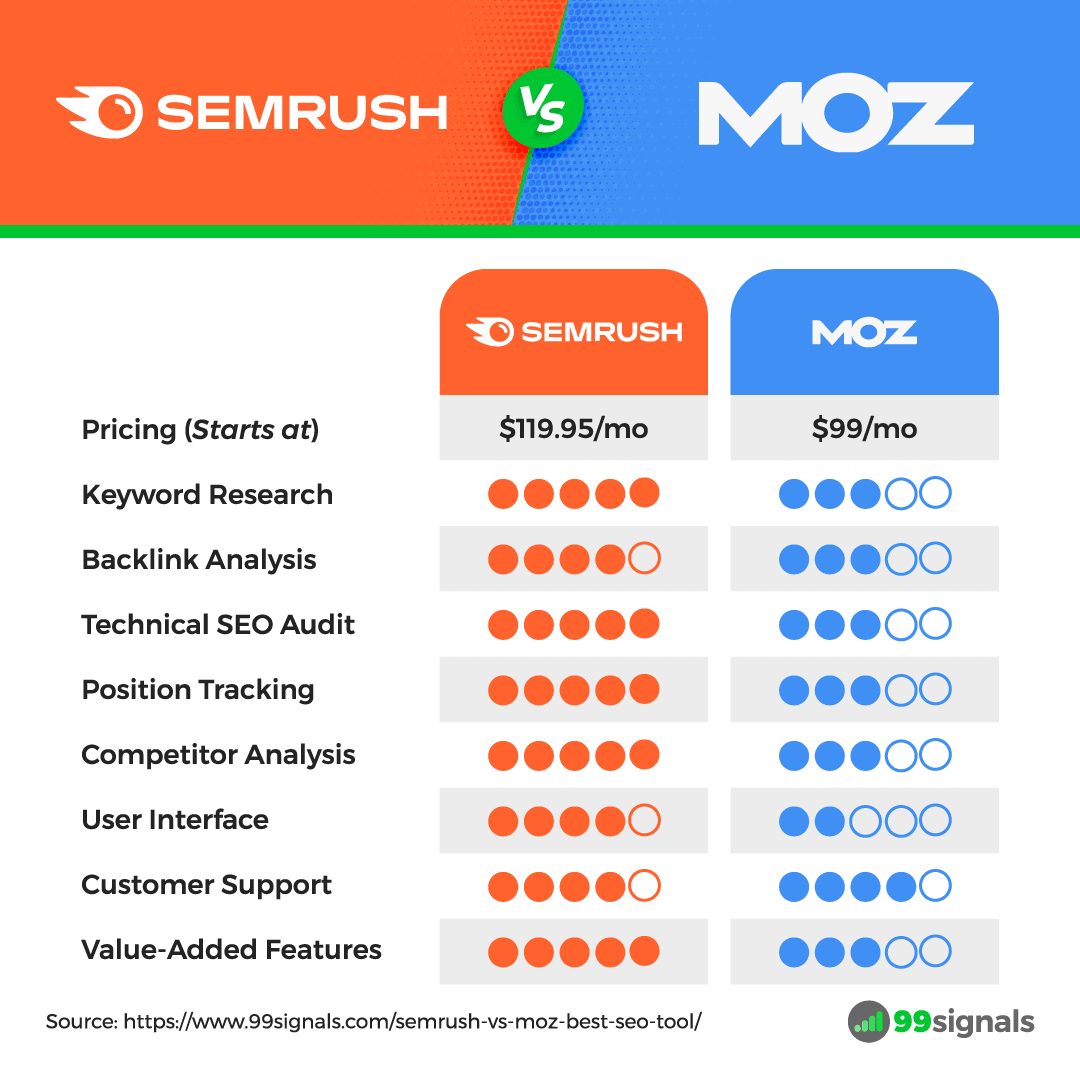If you’ve been a frequent reader of my blog, then by now you’d probably know how much I love using Semrush. It’s my go-to software for keyword research, competitor analysis, on-page analysis, technical SEO fixes, and more recently, even social media benchmarking and scheduling. That said, in recent times, I’ve found myself spending a considerable amount of time using other SEO tools as well, mainly Ahrefs, GrowthBar, and Serpstat. Both these tools are fantastic and offer their own unique benefits, but Semrush still remains my trusted tool for serious SEO work. Why? Because Semrush provides more actionable insights and data than any other SEO tool on the market. Having used it extensively at my agency for clients from different industries, Semrush is truly the Swiss army knife of keyword research and competition analysis. It is also the preferred SEO tool of marketing experts around the world and once you start using the tool, it’s easy to see why. Before we jump into the nuts and bolts of Semrush, here’s a bit of history on how it all began for Semrush:
Semrush was founded in 2008 by a small group of SEO and IT specialists who wanted to create the ultimate online marketing tool. A tool that could provide relevant and accurate keyword research and competitor analysis data to make the marketplace a level playing field for businesses of all sizes. Over a decade later, the team achieved precisely that with Semrush and the company now has over 1,000 employees with 8 offices around the world. I first became aware of Semrush through marketing subreddits and forums. There seemed to be a general consensus among SEOs that this was indeed the holy grail of all SEO tools. My team and I were mostly using Moz Pro at the time and were mostly dissatisfied with the results we were getting. I go into specific details as to why in this Semrush vs Moz comparison post here. As a result, I signed up for a 1-month free trial of Semrush and was immediately swept off my feet with the tool’s functionalities. First and foremost, Semrush’s site audit tool helped me fix all the technical issues that were plaguing my site at the time. Next, by using Semrush’s competitor research toolkit and analyzing some of my competitors’ websites, I was able to gauge what improvements I needed to make to my site to take it to the next level. Needless to say, I canceled my Moz Pro subscription and signed up for Semrush’s Pro plan. These days, when I have a call scheduled with a prospective client, I prepare myself by using Semrush to analyze their market, find relevant keywords in their niche, and get some insights on their organic and paid competitors. Yes, you could argue that you can do this manually, but it’d take a massive amount of your time, and time, as we all know, is money. Especially at a bootstrapped agency like ours. Furthermore, the data you obtain through Semrush is far more comprehensive, reliable, and most importantly, accurate. If you’re reading this Semrush review, then you’re probably wondering whether it’s worth investing in an SEO tool that costs over $100 a month. Let me help you make this decision by sharing my own experience with the tool. In the process, I’ll highlight some of the features that I love and some that I feel could do with a few improvements. Important note: You’ll probably need to access Semrush while reading this review to get a deeper understanding of the features. If you haven’t already signed up for a trial, you can do so by clicking on the link below. It will give you free access to Semrush Pro for one month. It will unlock all the features you’ll need to use to thoroughly examine the tool. Get 1-month free access to Semrush Pro ($119.95 Value) In this Semrush review, we’ll cover the following aspects:
Comparison of Semrush’s Pricing Plans Top 6 Semrush Features Ease of Use Customer Support Customer Feedback and Sentiments How Semrush Compares with Other SEO Tools
Let’s get started! Feel free to jump to any section of this review using the links in this TOC:
Semrush Pricing Plans
If you’d like to dominate search rankings in your niche and find out what your competitors are up to, you’ve got to be willing to invest a decent amount of money in a good, reliable SEO tool. There are no two ways about it. Despite increasing the price of all their plans in January 2021, Semrush is still competitively priced, with the basic plan costing about the same as the ones provided by Ahrefs, Moz, and Raven Tools. Semrush offers three monthly pricing plans:
Pro – $119.95/month (Ideal for beginners and bloggers) Guru – $229.95/month (Ideal for small business owners and solopreneurs) Business – $449.95/month (Ideal for marketing agencies and marketing teams in big companies)
All three are recurring subscriptions. If you’re managing 1-3 sites, I’d recommend you sign up for the Semrush Pro plan. If you run an agency and deal with multiple clients and projects, then perhaps the Guru plan might be the right fit for your requirements. Get 1-month free trial to Semrush Pro
Top 6 Semrush Features
Semrush is loaded with features and I’ve gone into detail on most of its SEO, competitor analysis, and content marketing features in my free-to-download Semrush Playbook. In order to use Semrush to its maximum potential, I strongly recommend you download this free eBook by clicking the link below: Download the Ultimate Semrush Playbook for FREE I wish to update this eBook on a regular basis to make it easier for Semrush users to get the most out of their Semrush subscription. For the purpose of this review, however, I’ll be highlighting only those features which I find extremely useful and tools within Semrush that new users should start experimenting with right away.
1. Analyze Your Website
Before starting your competitive analysis, it’s always necessary to see how your site is performing on various parameters. Here are the 3 most important things you should know about your site:
Top organic keywords Organic search positions Total number of backlinks
Semrush helps you gather all this important information within a matter of minutes. Semrush’s Domain Overview report will give you a general view of how your website and your competitors’ websites are performing. Just type your domain name in the Semrush search bar, select “Domain Overview” from the drop-down menu, and hit the “Search” button. The report will give you an overview of how your site is performing on parameters such as traffic from organic search and paid search, backlinks, organic keywords, paid keywords, and more.
Next, visit “Organic Research” from the sidebar menu to obtain data on your site’s organic keywords, total traffic, and organic position changes. To view your backlinks, click on “Backlinks” in the sidebar menu. Here you can see your site’s backlink profile, the number of referring domains, types of backlinks (text, image, form, etc.) and a percentage split of follow vs nofollow links.
For all of the above, you can export the results into an Excel or CSV file for later use. If this is the first time you’re using Semrush, I’d urge you to try this step before moving on to more advanced features such as site audit and position tracking. Get 1-month free access to Semrush Pro ($119.95 Value)
2. Identify Your Organic Competitors
Identifying your organic competitors is one of the chief elements involved in dominating search results. The aim here to understand what your competitors are doing and then do it even better. To identify your organic competitors, simply enter your domain name in the Semrush search bar, select “Organic Research” from the drop-down menu, and hit the “Search” button. From the organic research report, visit the “Competitors” tab to get insights on your competitors:
You’ll first view the Competitive Positioning Map, a visual representation of where your website stands amongst your competitors. In the map, you’ll notice bubbles in different positions based on organic keywords and organic traffic.
The more keywords a site ranks for, the more to the right the site will appear on the map. Similarly, sites that receive more organic traffic will appear higher on the map. When you hover over each of the bubbles, you can see their organic keywords and traffic.
When you scroll down, you’ll find the organic competitors table.
Don’t be intimidated by the massive number of competitors you’ll see here. Pay close attention to these metrics:
Competition Level Common Keywords SE Keywords
These three metrics will reveal your closest competitors and these are the sites you’d want to outrank in search engines.
3. Keyword Research
Despite having a plethora of features and over 40 tools to fine-tune your digital marketing, Semrush is most known for its keyword research capabilities. To get a complete breakdown of Semrush’s keyword research features, I’d urge you to check out our in-depth Semrush keyword research guide. For this review and for the sake of brevity, I’ll quickly highlight a few key keyword research features. There are 3 primary keyword research tools in the Semrush toolkit and each tool has its own purpose:
Keyword Overview – use it to get a quick summary of your target keywords’ monthly search volume, keyword difficulty, and other important keyword metrics. Keyword Magic Tool – use it to generate a ton of unique keyword ideas for your seed keywords. Topic Research Tool – use it to generate a long list of fresh topics for your next piece of content.
To start the keyword research process in Semrush, plug in your seed keywords in the search bar. Semrush will then quickly pull out an overview report for your keywords, featuring all the critical keyword metrics and some top keyword variations based on your seed keywords.
Pay special attention to search volume, keyword difficulty, and the trend graph. To view more keyword variations for your target keywords, hit the “View all” button below the list of keywords in the “Keyword Variations” section. This will open up SEMrush’s Keyword Magic tool, where you can use advanced filtering options to narrow down the list of keywords for your next campaign. This is just a quick glimpse into Semrush’s keyword research features. To learn more advanced tricks, check out How to Use Semrush for Keyword Research: The Definitive Guide.
4. Do a Site Audit and Fix Errors
The site audit functionality in Semush helps you do a diagnostic check of your website in order to identify and fix the most troubling on-page SEO and technical SEO issues with your site. To do a site audit on Semrush, click on “Add New Project,” enter the details, and select “Setup Site Audit.” Select the number of pages you’d like SemrushBot to crawl, skip all other steps for now, and click on “Start Site Audit.”
This may take a few minutes, depending on the number of pages you select. Once the audit is complete, Semrush will display a report that will show the overall SEO health of your site in percentage and highlight errors and warnings that may be hurting your SEO.
Errors highlighted in red are the most critical SEO problems your site is facing at the moment and the ones you should start fixing right away. To explore more features in the Semrush’s Site Audit tool, check out Semrush Site Audit: 10 Most Overlooked Features.
5. On Page SEO Checker
On Page SEO Checker is a highly underrated Semrush tool, which pinpoints the exact weaknesses of your website and provides you with actionable recommendations. With On Page SEO Checker, you can promptly check to see if your content complies with all the on-page and off-page SEO elements, like your content’s relevancy and quality, backlinks’ trustworthiness and reputation, page title, H1, H2 tags, and meta description. To access the tool, navigate to: SEO > On Page & Tech SEO > On Page SEO Checker Select any of your active projects on this page and configure your domain. Add the pages and keywords that you’d like to optimize and hit “Collect Ideas.” Each of these pages will be analyzed and you’ll receive instant recommendations on how to optimize them.
You just have to click on the “Ideas” button next to the page you’d like to optimize to view suggestions from Semrush to improve your SEO.
If you’d like recommendations on your site’s user experience signals, connect your Google account with Semrush. This will allow Semrush to analyze your Google Analytics data and give you a complete picture of your site’s UX to help you find any loopholes that you need to fix in order to improve your search visibility.
6. PPC Analysis
I wouldn’t be doing Semrush justice if I didn’t mention its powerful PPC tools. Monitoring your competitors’ PPC ads is a vital step in staying one step ahead of your competition. With Semrush, you can keep a tab on the keywords your competitors’ are targeting, their rankings in SERPs, and even have a sneak peek at their ad copies. This way you can polish your own PPC ad copies and optimize your landing pages for maximum impact.
Ease of Use
Semrush is easy to use with a clean user interface. Nevertheless, it may take some time for you to acclimatize yourself with the interface, especially if you’re migrating from tools like Moz or SpyFu. Plus, it’s loaded with features, so it can be a bit overwhelming at times. That said, there is absolutely no reason to worry as Semrush has a wealth of resources that you can dig into to get a step-by-step guide to mastering the tool. You can also tune into their webinars (both past and upcoming) to keep yourself updated with all the new features and functionalities.
Customer Support
Customer support can make or break a company’s reputation. Needless to say, it’s one of the most important factors involved in a company’s success. This is especially true in the case of services such as Semrush where there are bound to be questions and queries from a highly active SEO community. Semrush provides support mainly through their comprehensive knowledge base and email. They also organize webinars on a regular basis where they unveil new features and provide some actionable tips to improve your SEO and PPC.
Here are links to resources which you should definitely check out to learn new ways to use Semrush:
Semrush Knowledge Base Upcoming Webinars
Side note: I held a webinar on the topic ‘Actionable Affiliate Marketing Tips’ in collaboration with Semrush back in July 2018. You can watch the recap of the webinar on YouTube by clicking here.
Customer Feedback and Reviews
Semrush continues to be a popular tool among marketing experts and professional bloggers. Top industry influencers like Brian Dean from Backlinko, Neil Patel, and Larry Kim feature Semrush prominently on their blogs. At the same time, it has near-perfect ratings on review sites such as G2, TrustRadius, and Capterra.
Here’s how Semrush is rated on the three most popular review sites:
G2 – 4.5/5 (1,034 reviews) TrustRadius – 8.6/10 (306 reviews) Capterra – 4.6/5 (1,194 reviews)
[The above ratings were last updated in January 2021]
How Semrush Compares with Other SEO Tools
In this section, I’ll quickly compare Semrush with three of its fiercest competitors: Ahrefs, Moz, and SpyFu.
Semrush vs Ahrefs: Is Semrush Better than Ahrefs?
If you want an in-depth analysis of these two tools, I’d urge you to check out this Semrush vs Ahrefs comparison post. I personally prefer Semrush over Ahrefs because it offers more bang for your buck. While Ahrefs has a better backlink analysis tool, Semrush is superior in every other aspect: from keyword research to technical SEO to content marketing. Having said that, both tools are phenomenal. So if you have the budget, subscribe to both tools. If not, I’d highly recommend Semrush. Here’s a quick breakdown of how Semrush compares to Ahrefs on key parameters:
Semrush vs SpyFu: Which Tool is Better for Competitor Analysis?
Both Semrush and SpyFu are two of the leading competitor research tools on the market. While SpyFu has a decent competitor research toolkit and is relatively cheaper than most other SEO tools on the market, it’s simply not in the same league as Semrush. Semrush is an all-purpose SEO tool, while SpyFu is solely focused on competitive analysis. But even from a purely competitive research standpoint, Semrush is a far superior tool. I explain the difference between these tools in this in-depth Semrush vs SpyFu comparison post. So if you want more details, I’d recommend you check out the post. Here’s a quick breakdown of how Semrush compares with SpyFu on key parameters:
Semrush vs Moz: Is Semrush Better?
Semrush and Moz are often pitted against each other because they offer similar features. But that’s where the similarities end. Over the last few years, Semrush has been at the forefront of innovation in the online marketing space. They have introduced several new features and improved on existing features to provide more accurate and comprehensive insights to their users. Moz, on the other hand, looks and feels like a tool that’s stuck in the past. Its UI is old, cluttered, and the SEO reports leave a lot to be desired. The free tools provided by Moz are still useful, but I don’t think the tool is worth shelling out $100 a month. For a more in-depth analysis, check out this Semrush vs Moz comparison post. Below is a quick breakdown of how Semrush compares with Moz on key parameters:
Get 1-month free access to Semrush Pro ($119.95 Value) Let’s wrap this post up by answering a few common questions about Semrush.
Can I Use Semrush for Free?
Yes, you can use Semrush for free. But Semrush’s free plan offers limited functionality. As such, I’d suggest you sign up for a free 30-day trial of Semrush Pro. This will give you full access to all of Semrush’s tools and features, and it will show you the full capability of Semrush to assist you in your SEO and online marketing efforts.
What is SemrushBot?
SemrushBot is the search bot software that Semrush sends out to discover and collect new and updated web data. A bot (also called web robot, web spider, and web crawler) is commonly used for web crawling. The data collected by SemrushBot is used for Backlink Analytics, Site Audit, Backlink Audit, among other things.
How Long is Semrush’s Free Trial?
Semrush’s free trial on its Pro plan ($119.95/mo) lasts for 30 days. The best part of Semrush’s free trial is that you get full access to all 40+ tools and features in the Semrush suite.
When was Semrush Founded?
Semrush was founded on 3 August 2008.
When Did Semrush Go Public?
Semrush went public on the New York Stock Exchange in March 2021. It’s currently listed on Nasdaq as SEMR.
How Does Semrush Collect Data?
Semrush uses its own machine learning algorithms and trusted data providers to present the data. To learn more about how Semrush collects data, refer to this resource on Semrush’s knowledge base.
What is Authority Score in Semrush?
Semrush uses Authority Score to measure the impact of a webpage or domain’s links. It’s similar to Domain Authority used by Moz and Domain Rating by Ahrefs.
What is Traffic Cost in Semrush?
Traffic cost is an estimate of how much you’d spend on Google Ads to generate the same traffic you’re currently getting from organic search. Traffic cost is one of the best SEO metrics to explain SEO’s ROI in dollar value.
Final Verdict
Once you start using Semrush, it’s easy to see why it’s trusted by so many industry experts and influencers. The team behind Semrush constantly introduces new and exciting ways to do keyword research and competition analysis, making it one of the most premium tools in the SEO software industry. The only gripe I have with the tool would be its backlink analysis feature. It’s been a chink in Semrush’s armor for a while now. It’s a minor gripe, and it’s an issue that Semrush seems to have addressed in the 2021 brand revamp. So that wraps up my review of Semrush. I suggest you try the tool yourself and see how it improves your site’s SEO. Click on the link below to get a 1-month free trial of Semrush Pro: Get 1-month free access to Semrush Pro ($119.95 Value) And once again, if you haven’t already downloaded my free Semrush Playbook, I’d strongly recommend you do that by clicking the link below. This PDF contains the most effective ways to leverage Semrush to improve your site’s SEO. Download the Ultimate Semrush Playbook for FREE Did you find this Semrush review useful? Please share your thoughts in the comments section. If you have any questions about Semrush, please feel free to ask them in the comments section and I’ll do my best to answer them. (Editor’s Note: This review was originally published in May 2017 and has been updated regularly since then for relevance and comprehensiveness.)
Semrush vs Moz: Which is the Best SEO Tool? 26 Best Google Chrome Extensions for SEO Link Building Strategies: 25 Proven Techniques to Get High-Quality Backlinks The Ultimate SEO Tools Showdown: Semrush vs Ahrefs vs Moz Pro vs SpyFu Semrush vs SpyFu: Which Competitor Analysis Tool is Better?


